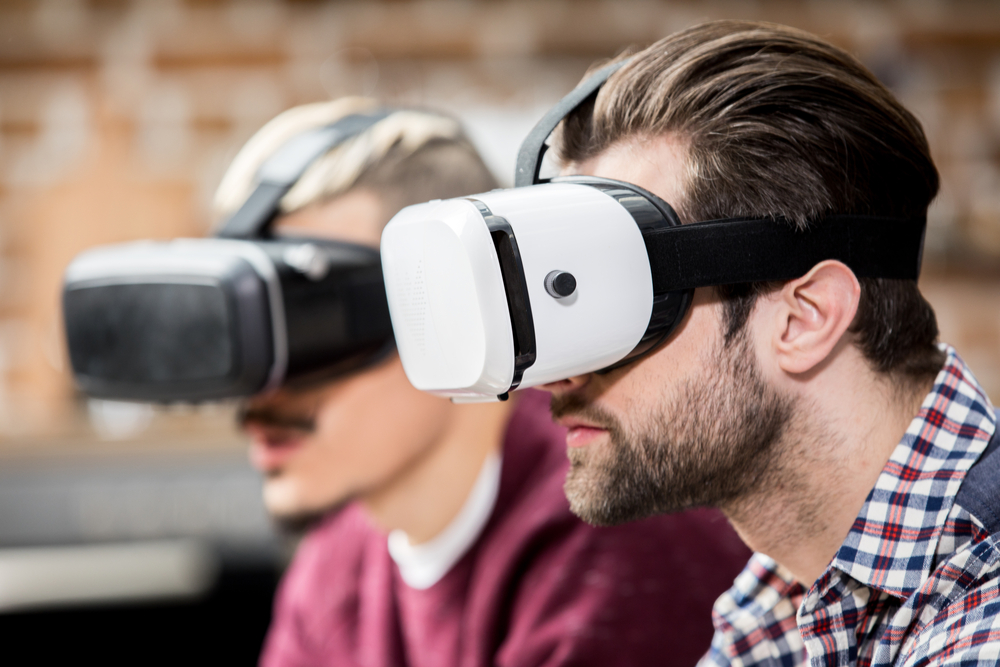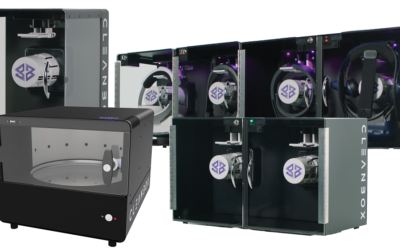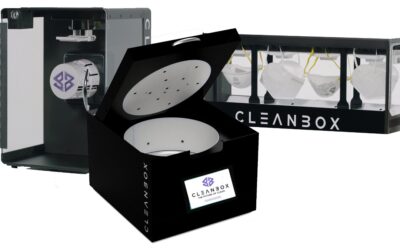As universities and higher education institutes begin to implement virtual reality (VR) and augmented reality (AR) systems in classrooms, hygiene protocols must grow to match this advancement. To prevent students from being exposed to the risks associated with communal equipment, institutes will need an efficient method to disinfect VR and AR technology. UVC light offers a safe way to sanitize VR and AR headsets and maintain hygiene standards.
How Higher Education is Transforming Learning With VR and AR and Keeping Students and Staff Safe
The past few years have brought a collective awareness of the importance of hygiene standards to the forefront. Now more than ever, educators are committed to providing safe and clean spaces for their students, regardless of age.
While the lower grades are associated with the spread of communicable illnesses such as chicken pox and strep throat, adults in higher education programs are just as at risk of contracting a virus as younger students. Possibly even more so, as pulling late-night study sessions and failing to eat nutritiously balanced meals can cause a weakened immune system in even the most resilient individual.
Academic Advancements
In addition to a revitalized appreciation of disinfection protocol, the past few years have also brought exciting curriculum advancements to educators and students, including using VR and AR technology in the classroom. By allowing anthropology majors to glimpse what life was like in ancient Rome and medical students to practice surgical procedures, this technology is revolutionizing educators’ abilities to elevate their students’ higher education experience.
Virtual and augmented reality systems enable students to gain an immersive understanding of the subject they are studying. From completing experiments that are too dangerous to physically attempt, to learning a foreign language through interactive games, the ways VR and AR programs can be used are infinite. However, despite VR and AR technology’s numerous benefits in the classroom, significant health risks accompany it that must be considered.
Risks Presented by AR and VR Technology
Health Concerns
The benefits of VR and AR technology in higher education vastly outweigh the risks. However, educators will still want to mitigate the potential dangers of using shared equipment.
When equipment is passed from student to student, any microbes one student inadvertently deposits on the device will be transmitted to the following users. The Covid-19 pandemic highlighted the speed at which a highly infectious virus can spread throughout a group and how essential hygiene precautions are to community health.
Economical Issues
Educational institutes suffered during the pandemic, and many still feel the lingering impact of the changes forced upon them by Covid-19. That last thing any institute needs is an illness outbreak, pandemic related or otherwise, as this can easily damage the public perception of a university, discourage future students from attending, or cause current students to choose to pursue their education elsewhere.
Additionally, if the outbreak occurs due to unclean equipment provided by the school for students to use, the school could be held liable. Taking steps to prevent the contraction and spread of illness is the responsible thing to do and shows current and potential students that a school holds itself to high standards when looking out for the health of students and faculty.
Mitigate Risk: Disinfect VR and AR Devices
The only way to prevent the spread of illnesses among students using shared equipment is to ensure that the device is thoroughly sanitized between each student. In order to ensure safety in the classroom, innovative UVC light technology will need to be harnessed and embraced.
The traditional options available to sanitize AR and VR devices are plentiful but not ideal. Institutes that use ineffective cleaning methods will remain at risk for students and faculty contracting and transmitting illness.
Wipes Fail to Sanitize VR and AR Devices
Issue: User Error
Although wipes are a frequently used cleaning product, they are far from the best option for sanitizing VR and AR headsets and equipment. Headsets are intricately designed and have numerous challenging areas to clean. In addition, pathogens often remain in seams and grooves after cleaning has been attempted. When headsets are cleaned with a wipe, it is easy for the individual cleaning the device to miss places or hurry through the process.
The Cleanbox Solution
UVC light boxes offer an alternative disinfection solution that removes the possibility of user error from the equation. Cleanbox UVC units are designed to be impossible to misuse, eliminating the chance that a human error during the cleaning process could result in a contaminated device. If an individual can push a button, they can use the Cleanbox unit to sanitize VR and AR devices.
First, the user will open the door of the unit. Then, they will place their headset inside, close the door, and press a single button to start the cleaning cycle. After the 60-second session, they will remove their sanitized device from the unit, free from pathogens and ready for use.
Issue: Excessive Waste
Wipes are expensive, and using them regularly to clean the headsets used by multiple classes is not a budget-friendly option for most universities. In addition to the financial waste associated with using wipes, there is the time wasted when wipes are used to sanitize devices.
Properly cleaning a device is not a swift process, and when numerous devices require cleaning, the time spent trying to disinfect VR equipment adds up quickly. With the faculty at most universities already overwhelmed, adding additional tasks stretches fatigued staff members closer to the breaking point.
The Cleanbox Solution
When UVC units are used to clean equipment, the only cost that must be budgeted is the initial purchase price. With an approximate lifespan of 10,000 hours or 6,000 clean per machine, using a Cleanbox system is 30 times less expensive than using alcohol-based disposable wipes. In addition, the revolutionary LED technology also disinfects devices in just 60 seconds, shaving a significant amount of time off of cleaning responsibilities.
Since the Cleanbox system is user-friendly, there’s no learning curve, which means educators trying to adapt to the advancements of VR and AR systems won’t have to deal with another technological device that’s challenging to master. Finally, the Cleanbox CX series comes in various sizes, allowing multiple headsets to be sanitized simultaneously.
Issue: Questionable Results
Wipes and household cleaning products cannot guarantee complete disinfection. There is no way to ensure that a wipe has effectively cleaned a shared electronic device, which puts the following user at risk. Unquantifiable cleaning options cannot be considered when the health of students and faculty members is at stake.
The Cleanbox Solution
Cleanbox systems have been rigorously lab-tested to determine their effectiveness in removing viruses, fungi, and bacteria. When Cleanbox disinfection systems are used, 99.999% of contagions are eliminated from the sanitized item. There is no variation in the disinfection quality from session to session, and the patented LED technology used in the units emits UVC rays that incapacitate pathogens.
Innovative Solutions to Modern Dilemmas
As VR and AR systems continue to evolve, higher education institutes will expand their use of the technology. By having hygiene protocols already in place, transitioning to the widespread use of shared electronics will be easier on educators and safer for students. The UVC units engineered by Cleanbox allow universities to improve their cleaning methods alongside their curriculum offerings. Contact Cleanbox to learn more about the benefits of UVC disinfection.





